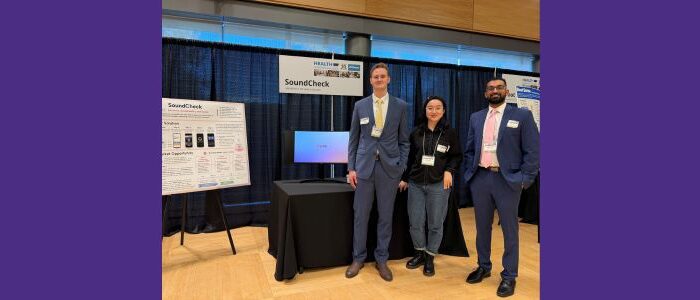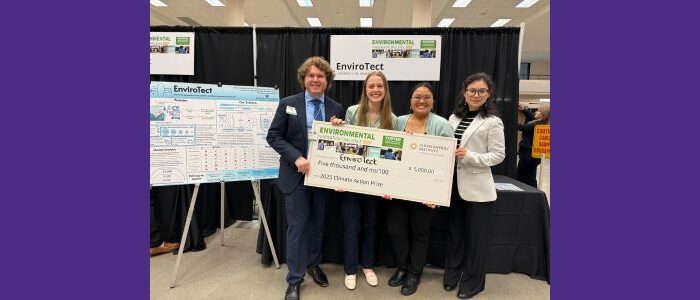Professor Emeritus
Not accepting graduate students
kwbeach@uw.edu
Phone: (Wales, home) 01873 855 499
Kirk Beach
Diagnostic ultrasound
Noninvasive diagnosis of cardiovascular diseases
Stroke
Noninvasive investigations in brain trauma and brain function.
Bioengineering research contributes to extension of high quality life, but the biological processes that lead to disability are complicated, episodic, and slow to develop; the clinical outcomes are often sudden and catastrophic. For instance, a carotid artery atherosclerotic stenosis, responsible for 25% of the half million US strokes each year, evolves over decades, but erupts causing a debilitating stroke in seconds; of the millions of carotid stenoses, only 1/16 will erupt causing stroke. Most biomedical research is empirical, testing hypothetic outcomes against risk factors over years or decades: too short for reaping the benefits, too long for publishing within the investigator’s career. By combining careful theoretical engineering analysis to prevalent clinical problems, bioengineering can project beyond empirical observation time horizon.
Seattle has provided the foundation for innovative diagnostic ultrasound research beginning with Bioengineering founder Robert Rushmer, ultrasound technology pioneer Don Baker and clinical developers such as Gene Strandness. As part of the Strandness group, we developed and popularized noninvasive diagnostic methods for clinical venous and arterial diseases, exploiting technical details of ultrasound signal analysis and other methods. Over 4 decades, Gene Hokanson, David Phillips and I, along with students and colleagues, have developed ultrasonic methods to study natural sub-micron tissue motions and strains in ambulatory patients with micron level displacement resolution and sub-millisecond time resolution which promise to identify: atheroma neovascularization, occult hemorrhage, placental dysfunction, hemodynamic pathologies, and physiologic and pathologic changes in brain function including brain response to trauma. Based on well-known factors affecting the development and remodeling of the cardiovascular system, the application of engineering analysis of physics and physiology principles allows the design of clinical examination protocols to identify malignant pathologies in time for effective prophylactic therapy.
One of the greatest pleasures in research is to test the most certain beliefs against experiment to discover that these obvious beliefs are absolutely wrong. Such events lead to the most exciting and significant insights and advances.
M.D., University of Washington, 1976
Ph.D., University of California, Berkeley, 1971
M.S., University of California, Berkeley, 1968
B.S., University of Washington, 1965
2003 UW Distinguished Contributions to Lifelong Learning Award
1992-2014 Ultrasound in Medicine and Biology, Editorial Board
1984 Honary Member, Society of Vascular Technology
1981-2006 American Registry of Diagnostic Medical Sonographers
1965 Tau Beta Pi
Canxing Xu, Chun Yuan, Edward Stutzman, Maria de Gador Canton, Keith A. Comess, Kirk W. Beach, Quest for the Vulnerable Atheroma: Carotid Stenosis and Diametric Strain—A Feasibility Study. Ultrasound in Med. & Biol., Vol. -, No. -, pp. 1–18, 2015 epublished http://www.umbjournal.org/article/S0301-5629(15)00641-9/pdf
Kirk Beach, Fausto Passariello & Alun Davies, Chapter 1 Basic concepts in venous hemodynamics and physiology of venous flow, in B.B. Lee, M. Meissner, K.Myers, A. Nicolaides, Venous hemodynamic measurements in the investigation of lower limb venous disease: the UIP Consensus according to scientific evidence.
Zierler RE, Beach KW, Bergelin RO, Lal BK, Moore WS, Roubin GS, Voeks JH, Brott TG; CREST Investigators., Agreement between site-reported and ultrasound core laboratory results for duplex ultrasound velocity measurements in the Carotid Revascularization Endarterectomy versus Stenting Trial., J Vasc Surg. 2014 Jan;59(1):2-7.
Beach, KW, Principles of Ultrasonic Imaging and Instrumentation, Chapter 5, In Nicolaides, A., Beach, K.W., Kyriacou, E., Pattichis, C.S. (Eds.) Ultrasound and Carotid Bifurcation Atherosclerosis, Springer, 2012.
Beach KW, Leotta DF, Zierler RE., Carotid Doppler velocity measurements and anatomic stenosis: correlation is futile., Vasc Endovascular Surg. 2012 Aug;46(6):466-474.
Sikdar S, Lee JC, Remington J, Zhao XQ, Goldberg SL, Beach KW, Kim Y., Ultrasonic Doppler vibrometry: novel method for detection of left ventricular wall vibrations caused by poststenotic coronary flow., J Am Soc Echocardiogr. 2007 Dec;20(12):1386-1392.
Kucewicz JC, Dunmire B, Leotta DF, Panagiotides H, Paun M, Beach KW., Functional tissue pulsatility imaging of the brain during visual stimulation., Ultrasound Med Biol. 2007 May;33(5):681-690.
Beach KW. D. Eugene Strandness, Jr, MD, and the revolution in noninvasive vascular diagnosis: part 1: foundations., J Ultrasound Med. 2005 Mar;24(3):259-72. Part 2: Progression of vascular disease., J Ultrasound Med. 2005 Apr;24(4):403-14. Part 3: seeking precision., J Ultrasound Med. 2005 May;24(5):567-581.
Dunmire B, Beach KW, Labs K, Plett M, Strandness DE Jr, Cross-beam vector Doppler ultrasound for angle-independent velocity measurements, Ultrasound Med Biol 2000 Oct;26(8):1213-1235.
Kirk W. Beach, David J. Phillips, John Kansky: Ultrasonic Plethysmograph, US Patent #5,183,046, Feb. 02, 1993.
Beach, Hatsukami, Detmer, Primozich, Ferguson, Gordon, Alpers, Burns, Thackray, Strandness, Carotid Artery Intraplaque Hemorrhage and Stenotic Velocity, Stroke 24:2 2/1993, 314-319.
Beach, Isaac, Phillips, Strandness: An Ultrasonic Measurement of Superficial Femoral Artery Wall Thickness; Ult Med Biol 15:8 723-728, 1989.
Purdy PK, Beach KW, Speed sensor and head-mounted data display, United States Patent 4,757,714, July 19, 1988.
Beach, Brunzell, Strandness Jr: Prevalence of severe arteriosclerosis obliterans in patients with diabetes mellitus: relation to smoking & form of therapy. Arteriosclerosis 2: 275-280, Jul/Aug 1982.
In the News
2025 UW Bioengineering Graduation Celebration June 12, 2025
2025-06-13T06:03:38-07:00May 15th, 2025|
Two Bioengineering PhD Students Compete at the UW Three Minute Thesis Competition
2025-05-12T10:31:33-07:00May 12th, 2025|
Building innovation through mentorship
2025-04-14T10:13:09-07:00April 9th, 2025|
Bioengineering MAB team wins Climate Action Prize at Environmental Innovation Challenge
2025-04-08T07:08:02-07:00April 8th, 2025|
UW Bioengineering Alumnus Kamal Shah leads smartwatch study to detect cardiac arrest
2025-04-03T10:29:38-07:00April 3rd, 2025|
Imaging pioneer Ruikang Wang to deliver Inaugural Fujimoto Lecture
2025-03-31T11:31:26-07:00March 31st, 2025|









